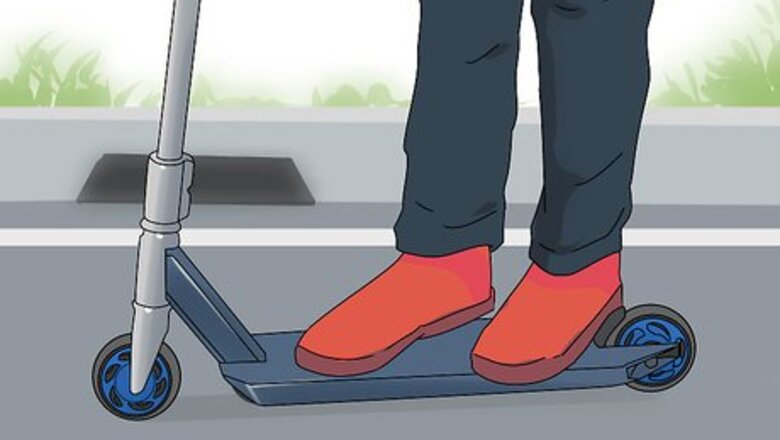
views
Setting up the Tailwhip

Stand on the scooter in a comfortable stance. Place your lead foot near the front of the scooter behind the handlebar and position your back foot just in front of the rear wheel. Bend your knees slightly to get ready to spring up for the jump. Most right handed riders naturally assume what’s known as a “regular” stance, with their left foot up front. If you’re left-handed, you might be more comfortable standing “goofy,” with your right foot up front instead. Getting your foot placement right will make your takeoff and your landing much easier.
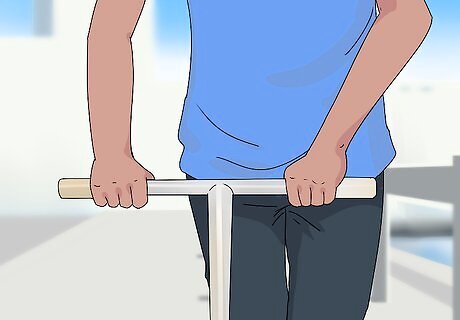
Grip the middle of the handlebars with both hands. Use your arms to stabilize both the scooter and your own body. They’ll also play a part in assisting the rotation of the deck (the part of the scooter you stand on), so it’s important to keep them in place until you’ve completed the trick. Adjust your handlebars to the height that feels most natural to you. Stay loose and relaxed. If you hold on too tightly, it may make your arms rigid. This stiffness can easily spread to the rest of your body and impact your jump or timing.
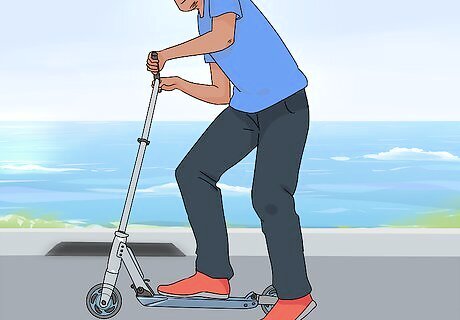
Push off a few times with your back foot to get moving. Try to build up to a moderate speed, about the same pace as a slow jog. After your last push, replace your back foot on the deck of your scooter and keep your eyes fixed in the direction you’re riding. Going too slow may cause you to lose your balance, while going too fast will make it harder to control your movement. Make sure you’re practicing somewhere where you have enough room to ride in a straight path for 15–20 feet (4.6–6.1 m).

Practice the tailwhip while standing still. If you’re not confident enough to try a tailwhip while in motion, you can perform your first few attempts from a stationary position. This will allow you to focus on your technique without having to worry about the ride up just yet. Later, you can work on putting the two phases of the trick together. One downside of throwing a tailwhip while standing in place is that you have to initiate the jump as soon as you get both of your feet on the scooter, which doesn’t give you much time to set up.Tip: If you’re afraid of the scooter rolling out from under you, move to a patch of carpet or soft grass. The plush surface will prevent the wheels from spinning.
Performing the Tailwhip
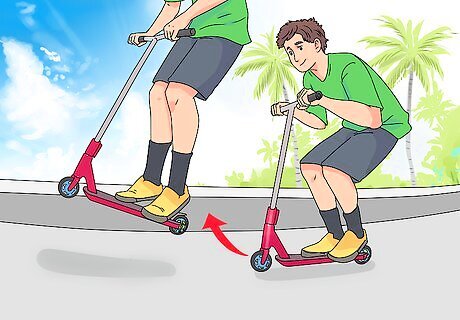
Jump as high as you can. As you jump, pull up on the handlebars to lift the scooter up with you. Tuck your knees to get even more elevation and create as much clearance as possible between the wheels and the ground. Try not let your feet come up before the deck. If your timing is off, you’ll lose track of where it is in relation to your feet. The higher you jump, the more time you’ll be buying yourself to get the deck all the way around before you land.

Kick the deck of the scooter behind you with your back foot. Once you reach the peak of your jump, flick the rear edge of the deck hard with your toes. It will begin to swing outward in a wide circle away from you. This is the “whip” part of the tailwhip. If you’re in a regular stance, you’ll initiate the kick with your right foot. If you’re a goofy rider, use your left foot. Push against the side of the brake rather than the thinner part of the deck to give yourself a bigger target to aim for.Warning: Be careful not to cross your legs during the kick, or you could throw off your landing and take a bad spill.
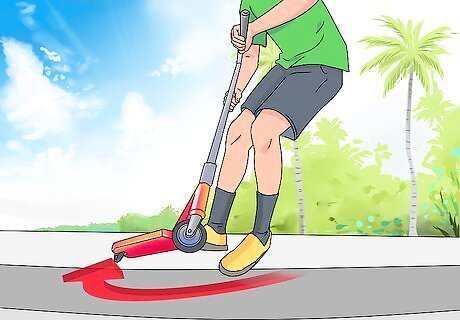
Use your arms to assist the spin during the whip. At the same moment that your feet leave the deck, tilt the handlebars slightly in the direction that it's moving and “pump” your arms up and down. Then, tilt the other way as it starts to swing back around. If you do this correctly, it will cause the deck to rotate faster. The arm motion is subtle, and it can be a little tricky to get the hang of it. It may be helpful to practice picking up and spinning the scooter on its own before you incorporate the movement into the trick. Remember, your hands should never leave the handlebar grips during the tailwhip.
Landing the Tailwhip
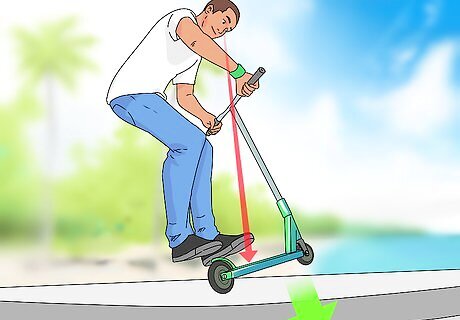
Watch the deck closely to spot your landing. Keep your eyes down and try to follow the deck as it finishes its rotation. Timing your movements to the movements of the deck will help you anticipate your landing and transition right back to riding with the correct foot placement. While you’re practicing, note how long (on average) it takes for the deck to make it all the way around. This will give you a better sense of when you need to start preparing for your landing.
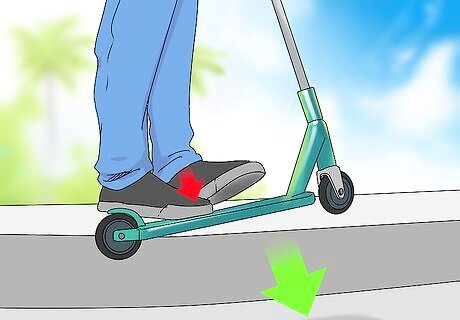
Bring both feet down on top of the deck to stop its rotation. Aim to stop the deck a moment before the wheels touch down. Both feet should return to where they were while you were setting up the trick, or somewhere close. As you continue to practice, you’ll be able to complete the rotation higher and higher, making it possible to link the tailwhip with grinds, stalls, and other tricks. If you’re having trouble getting both feet back into position at once, break down the last part of the trick so that you’re stopping the deck with your lead foot, then maneuvering your back foot where it needs to be.Tip: Try to land poised on the balls of your feet, rather than your midfoot or heels.
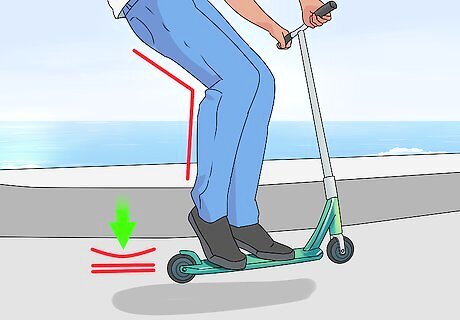
Bend your knees to absorb the impact. Continue dropping down a bit after gravity has delivered you back to the ground. Sinking your weight will take most of the shock out of the landing while also lowering your center of gravity to enhance your balance. If you land with your legs perfectly straight while moving, it’s possible for your momentum to carry you too far forward, causing you to fall. Learning to brace yourself properly will be especially important once you start riding ramps or throwing tailwhips off of higher obstacles.
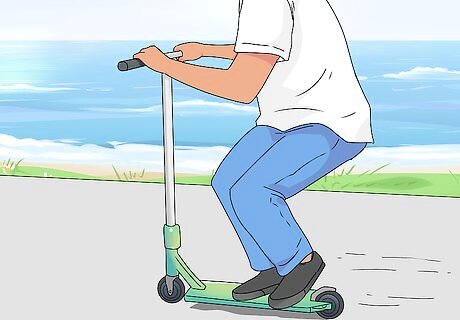
Ride away smoothly. Turn your head to face the direction you’re moving as you touch down and regain control of the scooter. Congratulations, you just landed your first tailwhip! Keep practicing until you get to the point where you can hit the trick over and over again with consistency. Watch out for nearby obstacles. The last thing you want is to pull off a sick tailwhip only to eat the curb because you weren’t looking where you were going!




















Comments
0 comment